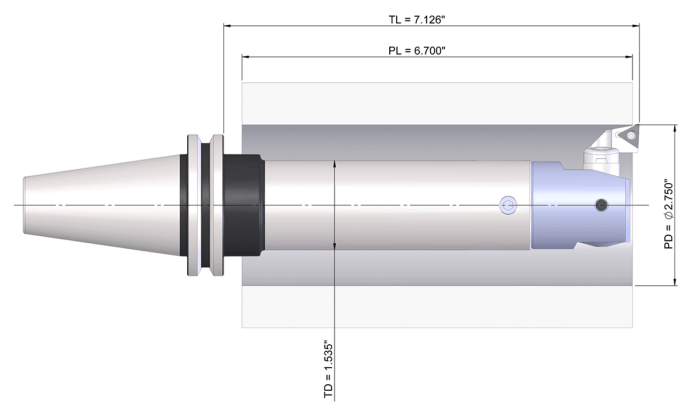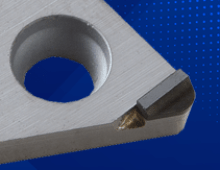The best service to your customers is to explain the benefits your product and your know-how can deliver to them.
This article is adding value to do so..
Calculating Length-to-Diameter Ratio for Boring
Boring tool performance depends greatly on the Length-to-Diameter (L:D) Ratio of the application. While this is a straightforward calculation, the Length and Diameter values to be used may not be clear.
Given the application image shown above, the part L:D ratio is given by the calculation 6.7/2.75=2.4. For reference, most ratios under 4 are considered optimal, which means that maximum cutting conditions can be applied based on the part material and insert grade.
When we look at the boring tool being used, however, the ratio is much different. For the boring tool, the calculation is 7.126/1.535=4.6, which falls into the critical category, where cutting speeds and feeds may need to be reduced in order to produce an acceptable bore. The tool’s L:D ratio is the one that needs to be considered when determining cutting parameters. In order to reduce the ratio, and therefore increase the productivity of the operation, the boring tool may need to be tweaked.
In this example, an extended range insert holder is being used. This could be explained by borrowing in-house components from another application and just replacing the insert holder to reduce the tooling investment for this part, which is a great idea for small batch sizes. However, when production volumes increase, cycle times need to be reduced. This tool would likely need to be replaced with an assembly using a larger modular connection size and boring head, which would help in two ways:
- reducing the L:D ratio of the assembly
- reducing the unbalance of the assembly by using an insert holder that sits closer to the boring head
In more extreme cases of this type of application, there are other options that can be chosen to increase productivity such as carbide extensions, or damped components which minimize vibration at higher cutting parameters than standard steel components.
Did you find this interesting or helpful? Let us know what you think by adding your comments or questions below.
















Santosh Tipale
Thu, 10/03/2024 - 14:34